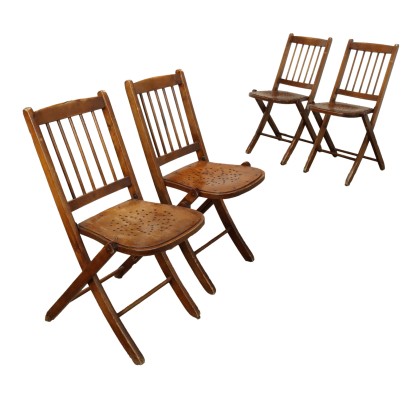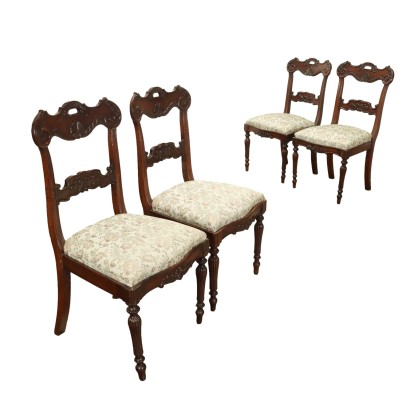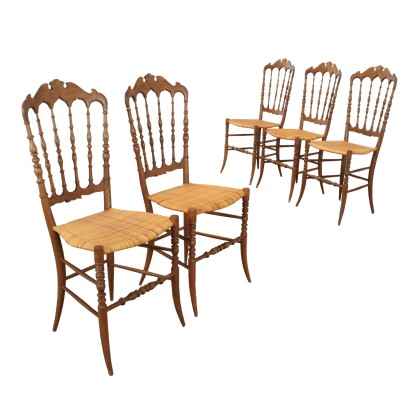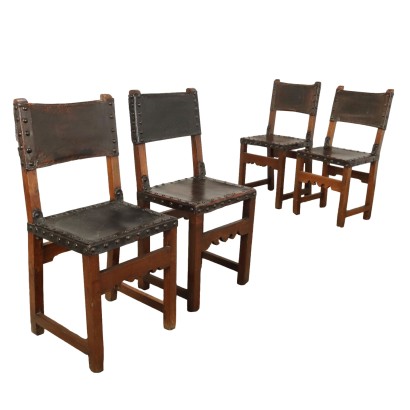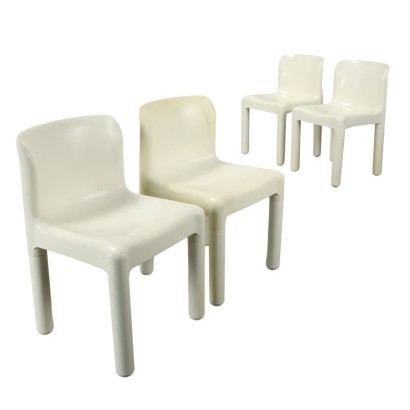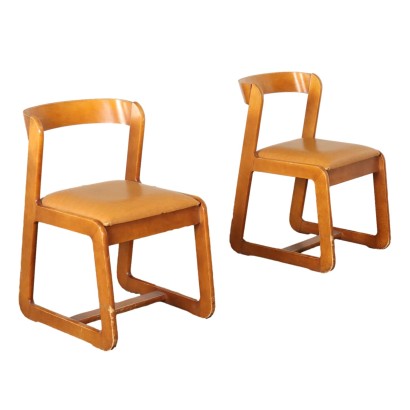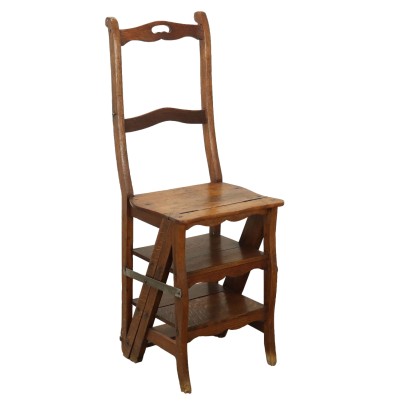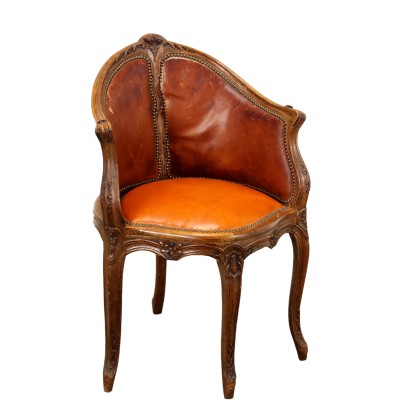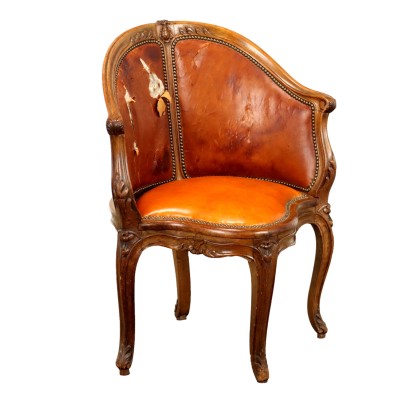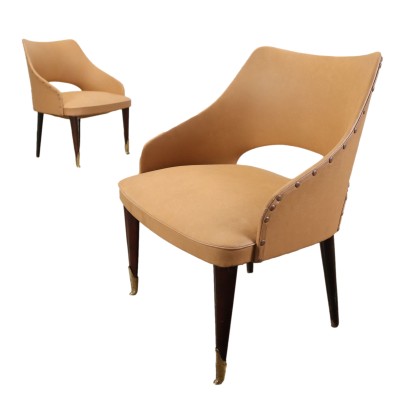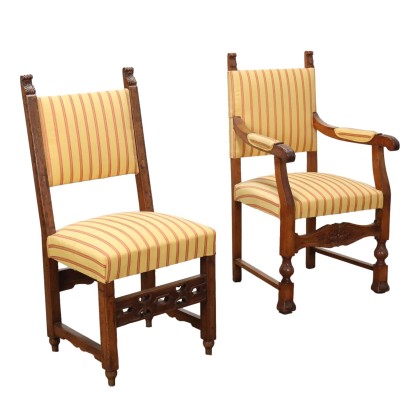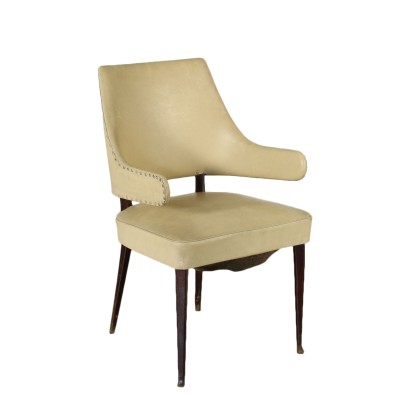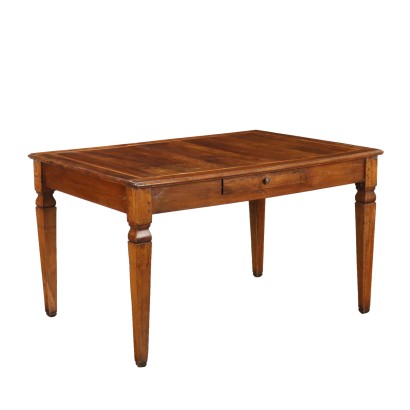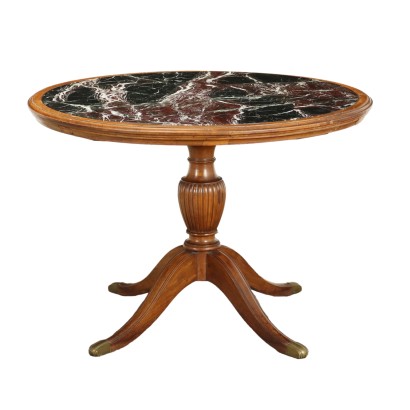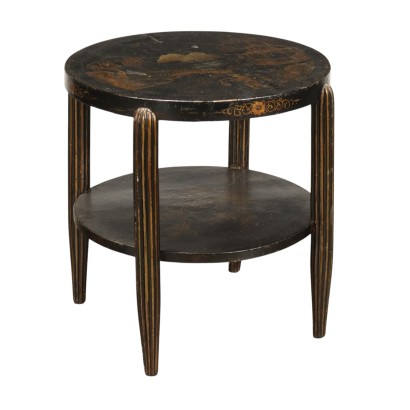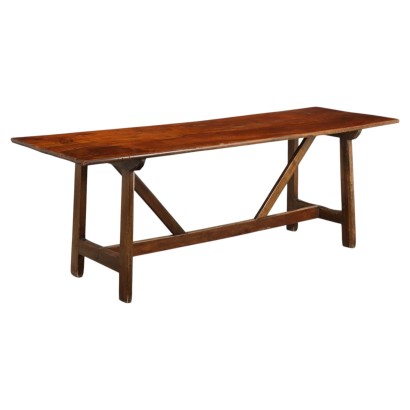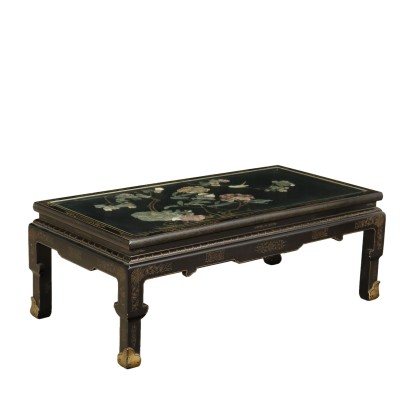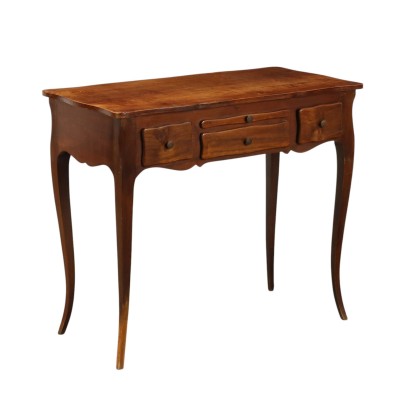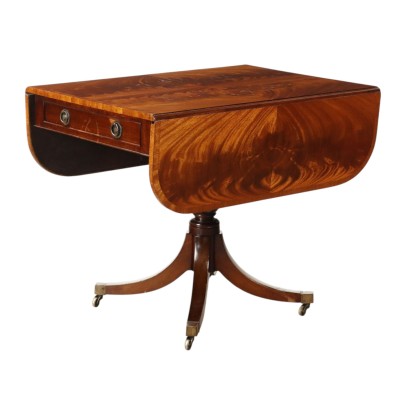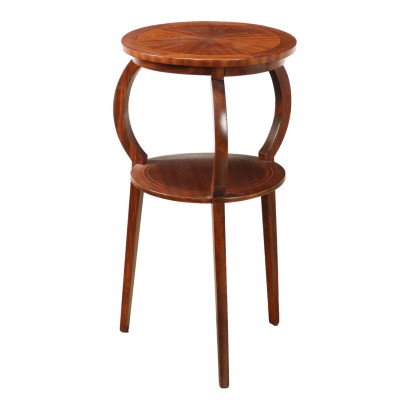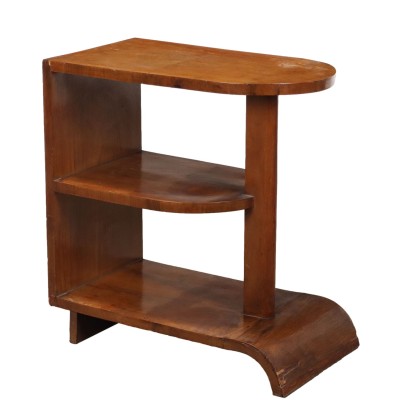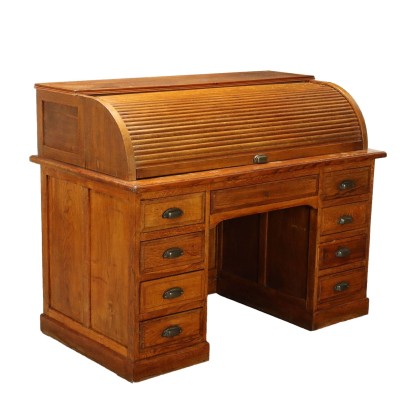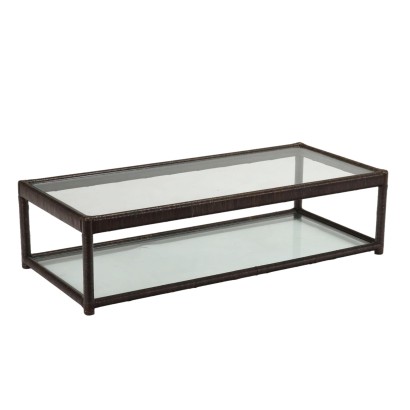Antique Chairs County Hotel Canterbury Beech Art Deco XIX Century - England, Early XX Century
Features
England, Early XX Century
Style: Art Déco (1920-1950)
Age: 20th Century / 1901 - 2000
Origin: England
Main essence: Beech
Description
Group of four chairs made of beech, early 1900s. They are folding chairs and have an open backrest decorated with turned rods and a plywood seat with a star decoration made with holes. On the back of the seats is the inventory mark County Hotel Canterbury, a famous Hotel from the early 1900s, located at 30/31 High Street, Canterbury.
Product Condition:
Product that due to age and wear may require restoration and polishing. We try to present the real condition of the furniture as completely as possible with the photos. If some details are not clear from the photos, what is reported in the description is valid.
Dimensions (cm):
Height: 83
Width: 40
Depth: 52
Seat height: 46
Additional Information
Style: Art Déco (1920-1950)
The name Art Déco is due to the exhibition held in Paris in 1925, which was called the International Exhibition of Modern Decorative Arts and was the successor of the Liberty style.nArt Déco is a stylistic historical period formed after the Liberty floral period, shortly after the end of the First World War.nThere was an almost radical change anticipated by the growth of the Precisionist movement and that of Cubism (in art), the Art-Decò furnishings were characterized by decidedly more rigid lines and the presence of geometric figures, definitively abandoning the sinuous and wavy lines , of objects and furnishings, from the previous Liberty period.nIt asserted itself from the beginning of 1915 until the beginning of the 30s.nThis style was transversal and major exponents were created in the most diverse art forms, from urban architecture to painting, from sculpture to glass masters, from the production of objects such as furnishing accessories to jewellery.Age: 20th Century / 1901 - 2000
20th Century / 1901 - 2000Main essence: Beech
It is a semi-hard wood which, unfortunately, is easily wormed, therefore it is considered poor. Due to its light but variegated shades, from blond to reddish, it was nevertheless appreciated by French cabinetmakers. It was mainly used for furniture structures or, as an alternative to walnut, by provincial English furniture makers for popular works, mostly in the 1700s. The noblest use is due to Thonèt, who applied the steam bending of the beech in the making of the furniture, in particular for the chairs that took his name.Other customers have searched:
Per scoprire tutto su sedie antiche e di design, consulta il nostro blog e le presentazioni su FineArt:
Leggi di più
Breve storia della sedia, dall'Antico Egitto alla produzione in serieCoppia di sgabelli, Roma XVII secolo
Coppia sedie barocchetto, Venezia
Sedie anni '50, Manifattura Italiana
Due sedie 'Ninfea' Gio Ponti da collezione
Due sedie 'Ninfea', Gio Ponti per F.lli Reguitti
Sull'antiquariato in generale dai un'occhiata anche a:
Classic Monday: da un pezzo dei nostri magazzini alla storia dell'antiquariato
L'antiquariato dalla A alla Z: il Dizionario dell'Antiquariato
Il dizionario dell'antiquariato - Lastronatura
Il dizionario dell'antiquariato - Mascherone
Il dizionario dell'antiquariato - Natura morta
Il dizionario dell'antiquariato - Opificio
Il dizionario dell'antiquariato - Pastiglia
Il dizionario dell'antiquariato - Savonarola
Il dizionario dell'antiquariato - Rosone
Product availability
The product can be seen at Cambiago
Immediate availability
Ready for delivery within 2 working days from ordering the product.

